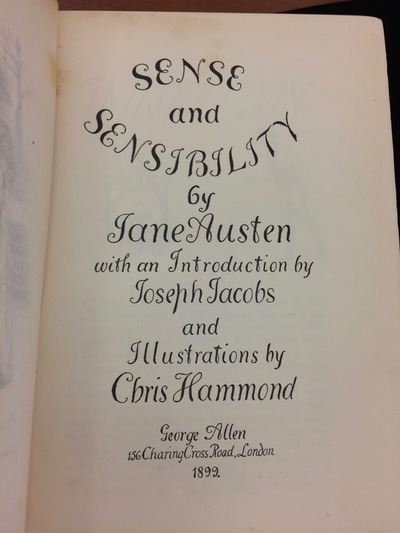
A highlight for me was learning that Victorian illustrators updated the clothing styles from the Regency to be more “modern” in their images – although these clothing choices are severely outdated now! She includes some pictures which are fascinating to view, although I wish there had been more. In the first – “Jane Austen, Illustrated” – Looser gives an in-depth analysis of the artistic interpretations of Austen’s novels.


Fanny Price gazing over the verdant park to the manor house.Īs advertised on the cover flap, the key question of this book is “How is a literary icon made, transformed, and handed down through the generations?” Each of its four parts contains anecdotes and research that generally follows a chronological journey from the 1800s to present. Lydon from Mansfield Park, Groombridge & Sons’ (London) 1875. Image from chapter two, of an illustration by A. Darcy? These questions and answers are only a few of the many addressed in The Making of Jane Austen. How did the early illustrations in Sense and Sensibility affect people’s views of the novel? When did the idea of a brooding Heathcliff-esque hero replace Jane Austen’s original reserved Mr. Devoney Looser’s The Making of Jane Austen is a gem of a book because, in it, she answers the integral questions of “how” and “when” that has rarely been asked. Not only for what we know about the author, but what we know about ourselves, her fandom. The little fact about when Jane was famous shouldn’t be a footnote in her history because how and when she became THE Jane Austen is of cultural and historical importance. Somehow not knowing this fact earlier was very unsettling, and with hindsight, I think it was so unsettling because my ‘Jane Austen timeline’ was thrown off. How wrong I was in fact, many of Austen’s early readers never even knew her name until after she died.ĭiscovering you are mistaken is always a jolting experience, and I felt like my own literary world had shifted on its axis.

The enormous amount of 21st-century hype around Jane led me to believe that, like Charles Dickens, her fame began in her lifetime.

I had read her books multiple times, collected movie adaptations, researched and written papers about her novels in college, etc. I had been a self-proclaimed Janeite for years when I discovered this fact. I remember what I felt when I discovered that Jane Austen was not famous in her lifetime: Outright shock.


 0 kommentar(er)
0 kommentar(er)
